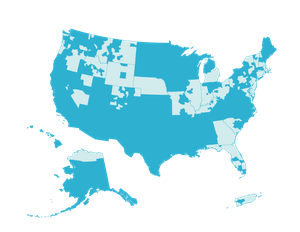This month, we are highlighting LISC's creative placemaking work in locales across the country, funded in large part by a grant from The Kresge Foundation.
In an interview for Rural Voices, a publication of the Housing Assistance Council, Bob Reeder, Rural LISC's director for national programs, discusses the importance of inclusion, diversity and economic equity when bringing arts and culture into community development efforts. With those key ingredients, creative placemaking can be a winning proposition for rural revitalization.
The excerpt below is from:
Housing Developers Come Together with Arts Groups and Artists
Rural Voices, Summer 2017, page 12
Rural Voices: Tell us about your organization.
Bob Reeder: Launched in 1995 by the Local Initiatives Support Corporation, Rural LISC now partners with 77* community development organizations. Rural LISC provides a wide range of services, including training, technical assistance, information, and financial support to help rural community developers address their communities’ problems.
RV: What is Rural LISC’s relationship/role with respect to creative placemaking?
BR: LISC enjoys a multifaceted role with respect to creative placemaking. LISC is a national grantee of both the Kresge Foundation and the NEA. At Rural LISC we developed and launched our own arts and culture grants program as a means of assisting in the revitalization – both economic and cultural – of rural communities and spaces. On a personal level, I was one of the leading architects of Rural LISC’s arts and culture grants program. I have also presented on creative placemaking at various national and local forums, am involved at an advisory board level on several creative placemaking ventures, and have served on several national creative placemaking grant awards panels.
RV: What is your advice for rural or tribal housing and community development organizations looking to explore creative placemaking? (i.e., where to go for help getting started)
BR: I would say to not seek to “recreate the wheel” on the one hand. On the other hand, recognize that many, if not most, of the direction that will be most helpful already resides within their local communities.
RV: How do you approach conversations with funders – public or private – about creative placemaking?
BR: Avoid jargon and translate the conversation into highlighting evidence-based, communitywide “positives” that can be generated by adding creative placemaking to comprehensive community development and economic revitalization forums.
*Since this interview was published, Rural LISC has added four new partners, bringing the total to 81.
